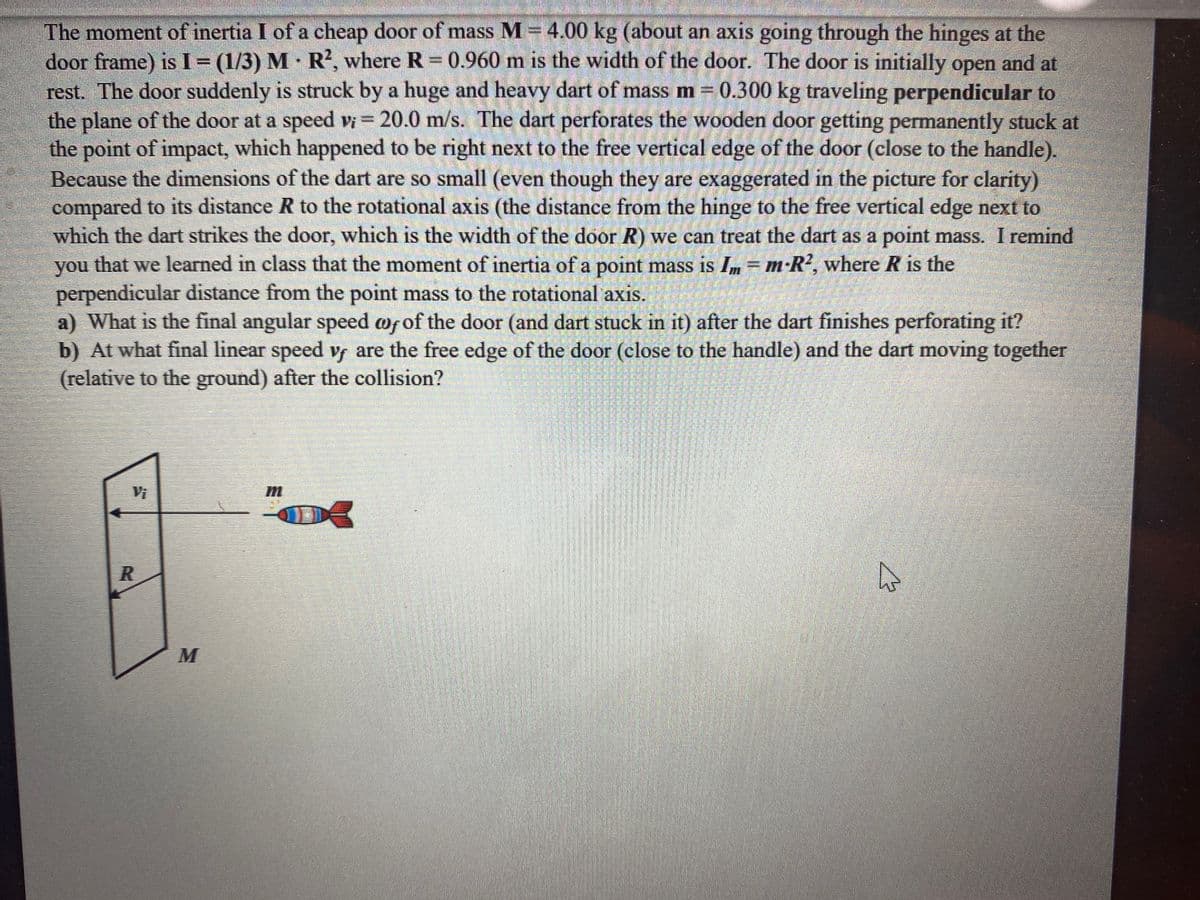The moment of inertia I of a cheap door of mass M= 4.00 kg (about an axis going through the hinges at the door frame) is I = (1/3) M R, where R = 0.960 m is the width of the door. The door is initially open and at rest. The door suddenly is struck by a huge and heavy dart of mass m = 0.300 kg traveling perpendicular to the plane of the door at a speed vi = 20.0 m/s. The dart perforates the wooden door getting permanently stuck at the point of impact, which happened to be right next to the free vertical edge of the door (close to the handle). Because the dimensions of the dart are so small (even though they are exaggerated in the picture for clarity) compared to its distance R to the rotational axis (the distance from the hinge to the free vertical edge next to which the dart strikes the door, which is the width of the door R) we can treat the dart as a point mass. I remind you that we learned in class that the moment of inertia of a point mass is Im = M•R², where R is the perpendicular distance from the point mass to the rotational axis. a) What is the final angular speed wf of the door (and dart stuck in it) after the dart finishes perforating it? b) At what final linear speed vy are the free edge of the door (close to the handle) and the dart moving together (relative to the ground) after the collision?
Angular Momentum
The momentum of an object is given by multiplying its mass and velocity. Momentum is a property of any object that moves with mass. The only difference between angular momentum and linear momentum is that angular momentum deals with moving or spinning objects. A moving particle's linear momentum can be thought of as a measure of its linear motion. The force is proportional to the rate of change of linear momentum. Angular momentum is always directly proportional to mass. In rotational motion, the concept of angular momentum is often used. Since it is a conserved quantity—the total angular momentum of a closed system remains constant—it is a significant quantity in physics. To understand the concept of angular momentum first we need to understand a rigid body and its movement, a position vector that is used to specify the position of particles in space. A rigid body possesses motion it may be linear or rotational. Rotational motion plays important role in angular momentum.
Moment of a Force
The idea of moments is an important concept in physics. It arises from the fact that distance often plays an important part in the interaction of, or in determining the impact of forces on bodies. Moments are often described by their order [first, second, or higher order] based on the power to which the distance has to be raised to understand the phenomenon. Of particular note are the second-order moment of mass (Moment of Inertia) and moments of force.

Trending now
This is a popular solution!
Step by step
Solved in 2 steps









